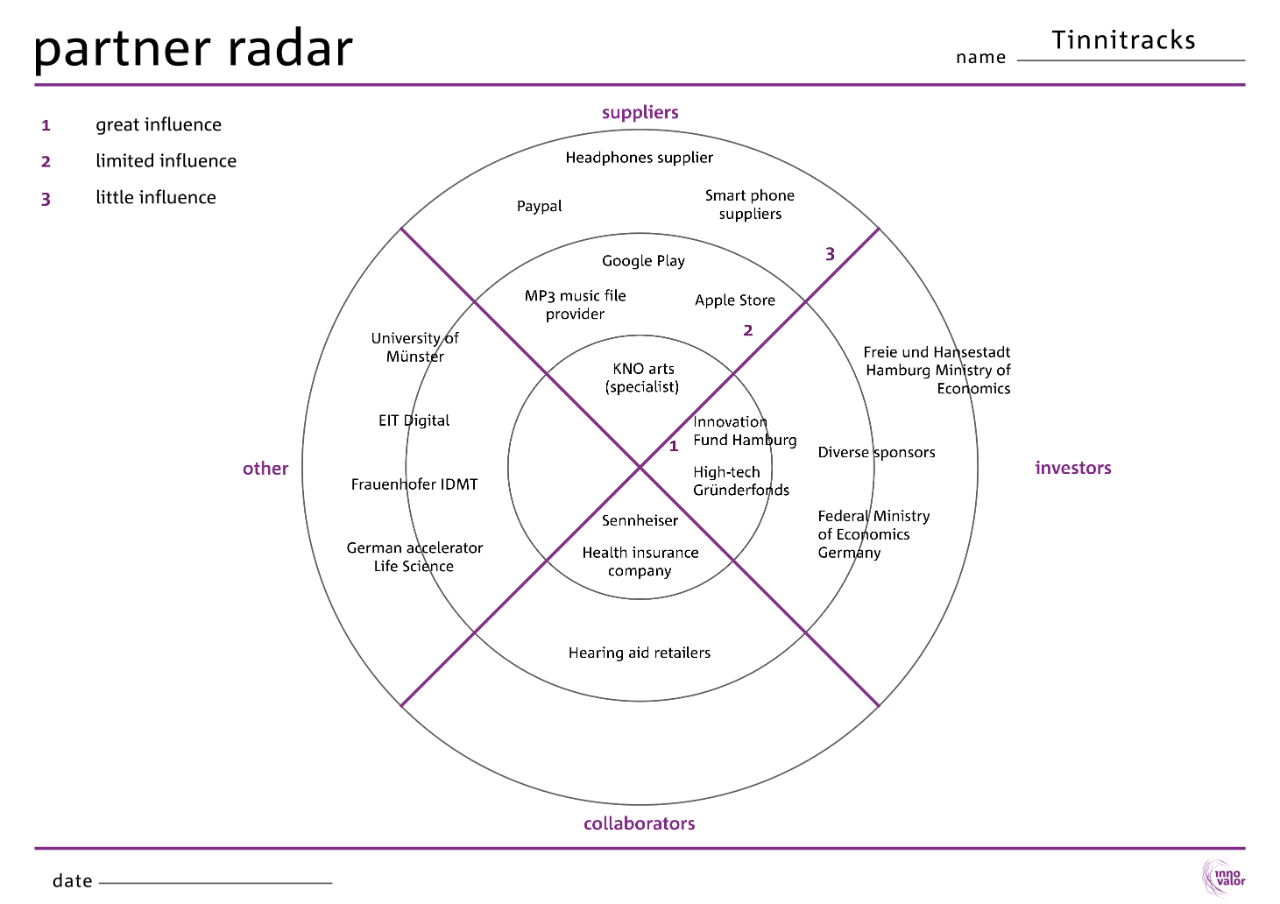Partner Radar

Tips for use
You can do this analysis by yourself or with colleagues.
Make a large printout of the Partner Radar to use in a brainstorm. Have a look at the example of Tinnitracks to get a better understanding of what a Partner Radar can look like.
How to use
The Partner Radar helps you to identify partners of your business. Partners are divided into three different levels on the Partner Radar based on the amount of influence they have on your business.
Level 1: great influence
Partners on this level are strategic partners that are very important or even critical to your business. You have a close relationship with them and need to involve them in your decision-making process, taking their perspective into account.
Level 2: limited influence
These partners have some influence on your business. They are not critical, but they provide valuable contributions to your business. These partners may be hard to replace. You would like to inform or maybe consult these partners, but they do not have to be involved in major business decisions.
Level 3: little influence
These types of partners may provide complementary resources. Partnering with them occurs on an operational level, they have very little influence on your business.
Furthermore, there are four types of partners.
Suppliers
A supplier is a person or a business that supplies goods or services to you. Suppliers provide you with something that you require and that you do not have yourself. A supplier can provide you with raw materials, partially assembled components, or custom parts. A supplier can also offer intangible services like data storage, knowledge or training.
Write down the names of those that provide your business with something needed. Take into account that one supplier might have more influence than another. Divide your suppliers over the three levels.
Investors
Investors allocate capital to your business. They have the expectation of future financial return. Investors can provide capital or buy stock or bonds.
Write down every person, business or institution that has provided your business with capital, has bought stock, or has in any other way invested in your business. Take into account that one investor might have more influence than another and therefore has more influence on your business. Divide your investors over the three levels.
Collaborators
A collaborator is a person or a business that works with your business to realise the same goals. Together with the collaborator your business can achieve more. For instance, in collaboration you can obtain greater resources, recognition and reward. Collaboration could save your business a lot of time and money.
Write down the names of those that your business collaborates with. Keep in mind that one collaborator might be more important for your business than another. Divide your collaborators over the three levels.
Other
There could be other kinds of partners that are specific to your business. For instance, an online store has many online partners such as affiliates, intermediaries, link partners and advertising partners.
Write down the names of the partners that are important in your market or to your business. Keep in mind that one partner might have more influence than another. Divide your other partners over the three levels.